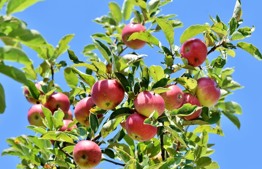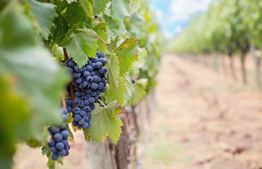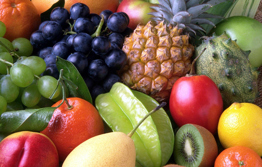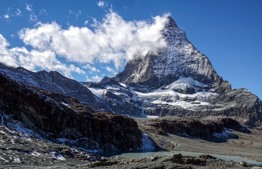Parashat Ekev: A G-dly Climate

The climate in the Land of Israel creates a situation in which a close relationship with Hashem is a necessity. The unknown "sigariyot" lead us to explore the famous Beit Netofa valley, which features a seasonal pond during the winter months.
The grass is greener on the other side of the fence
The climate that Hashem created for the Land of Israel is not simple. Our neighbors from the South, the Egyptians, do not suffer from a lack of water. While most of their land is desert, the vast majority of the population lives along the Nile bank, whose water rages all year round. There, the natural disasters that occur are often the result of flooding. While the Egyptians needed to actively divert water through trenches they make to their fields, the main water supply is constantly available. The Egyptian irrigation system is such that by drawing a trench in the soil by one's foot ("that you watered with your feet as the vegetable patch"), it is possible to divert the water to one's plot. it's not for naught that Egypt was considered the granary of the ancient world.
If we look at the great neighboring kingdoms from the North: Acadia, Assyria, and Babylon—considered together Mesopotamia (meaning "two rivers"), the water supply is also relatively secure. The two great rivers, the Euphrates and the Tigris, never run dry and support an abundance of life on their banks.
In the Land of Israel, however, where regular water resources are limited, we sorely need an additional water source: rainwater. The truth is that even if our available water sources could be exploited adequately, the topology of the Land of Israel does not support the Egyptian irrigation model; with all its hills and valleys, the best solution is undoubtedly rainfall.
The elusive Cyprus lows
The problem is that rain is not a sufficiently regular water source. The situation becomes more complicated given the Land of Israel's unique location and relationship with the Cyprus low pressure system.
A barometric low pressure system is a weather system where the air pressure is relatively lower than its surroundings. These low pressure systems are generally responsible for the precipitation in our region. The most important low pressure system in our region is referred to as the Cyprus lows, duly named since it originates from over Cyprus. The system moves from West to East, and anchors in the Mediterranean Sea. At this point, it has two options: it can either advance towards the center, in which case the Land of Israel will have rain; or it can move northwards, in which case Lebanon, Syria, and Turkey will have rain while Israel will remain thirsty for water.
What does this depend on? The answer is very simple, and it's in our parasha:
"וְהָיָה אִם שָׁמֹעַ תִּשְׁמְעוּ אֶל מִצְוֹתַי אֲשֶׁר אָנֹכִי מְצַוֶּה אֶתְכֶם הַיּוֹם ... וְנָתַתִּי מְטַר אַרְצְכֶם בְּעִתּוֹ יוֹרֶה וּמַלְקוֹשׁ" " If, then, you obey the commandments that I enjoin upon you this day … I will grant the rain for your land in season, the early rain and the late." In contrast, if G-d forbid, we stray from the mitzvot: "וְחָרָה אַף ה’ בָּכֶם וְעָצַר אֶת הַשָּׁמַיִם וְלֹא יִהְיֶה מָטָר" "For G-d's anger will flare up against you, and He will shut up the skies so that there will be no rain" (Devarim 11:13–17). One Divine "foo," and the elusive low pressure system moves northwards.
Such a system can only occur in the Land of Israel, a land constantly governed by Divine providence. Hashem gave us this land to ensure that we constantly stay close to Him. The moment we start going off track, He sends us a reminder in the form of no rain. This is not as much of a punishment as it is a sign, an attempt to wake us up so we do not forget our mission.
At first blush, it seems very stressful; as if G-d is holding onto us at the collar so we can't run away from Him. In truth, though, Hashem loves us so much and wants us to be close to Him. So that we won't stray too far away, he sends us a loving reminder to return before it is too late, when it will be so much harder to come back.
The gift of hostile neighbors
The truth is that this situation is not only true about the climate, but also of the geopolitical situation. Just less than two weeks ago we read in Eicha "צִוָּה ה' לְיַעֲקֹב סְבִיבָיו צָרָיו" "G-d has summoned against Jacob His enemies all around him" (Eicha 1:17). Chazal explains this verse to mean that adjacent to every Jewish settlement there was a hostile non-Jewish settlement: Castera and Haifa, Lod and Ono (Shir HaShirim Rabba 2:2:5). This is true today as well on the individual city/settlement level (the Jewish Quarter and the Muslim Quarter; Tel Aviv and Jaffa) and on the national level. Since its establishment, the State of Israel has been surrounded by enemies bent on destroying her. Even after signing peace treaties with some of them, these neighbors are not at all interested in peace and anti-Semitic propaganda abounds in these regions.
Even today, when water is available in every faucet, and sewage treatment factories have vastly altered the situation in terms of our water resources, Hashem continues to ensure that we stay on track. Rather than seeing it as something stressful, we can view this as a loving reminder to remain close by.
The Sigariyot of Beit Netofa
"אוֹכְלִין בָּרְגִילָה עַד שֶׁיִּכְלוּ סִגָּרִיּוֹת מִבִּקְעַת בֵּית נְטוֹפָה"
"Purslane may be eaten until the sigariyot no longer grow in the Beit Netofa Valley" (Mishna Shevi'it 9:5).
With the progression of the shemita year, we are encounter the mitzvah of bi'ur (destroying/removing from one's domain) for fruit imbued with the sanctity of shemita. As far as the obligation of bi'ur is concerned, there are three regions of the Land of Israel: Judea, East of the Jordan River, and the Galilee. We treat each region as an independent entity, so when a certain fruit or vegetable from that region is no longer available in the field or on the trees, bi'ur must be performed for that fruit or vegetable in the private homes of that region.
This mishna informs us when regila, a plant we know as purslane, no longer grows. Today purslane grows as a wild plant, but in the past it was domesticated.
Today it is possible to find purslane growing wild in irrigated fields during the summer. The problem with the plant is that it tends to hide, so it is difficult to know when it is no longer growing in the field. This is why the mishna gives us a clue: as long as the sigariyot (sinariyot/sandiyot) can still be found in the Beit Netofa valley, we know that the purslane is still in the field. Purslane has thick leaves that store water and thrives in moist soil. Apparently sigariyot also enjoy moisture, so they grow in the Beit Netofa valley (whose name, from the word notef, drip, indicates moist soil). The moment this plant, unknown to the Rambam (while there have been attempts to identify it), no longer grows in the Beit Netofa valley, bi'ur is performed on the purslane in one's home.
The Beit Netofa Valley
The Beit Netofa Valley is the largest valley in the Lower Galilee, at approximately 16 km long and an average of 3 km wide (reaching up to 4.5 km). The topology of the central Lower Galilee features many mountains and valleys, in the following order (from south to north): Nazareth range, Turan valley, Mt. Turan, Beit Netofa valley, Yodfat range, Sakhnin Valley, Shagur range, and the Beit HaKerem valley. From there the Upper Galilee mountains tower on ahead.
Only the west of the valley drains into the Yiftahel stream. Its deeper eastern side, however, does not drain off, so in rainy winters a seasonal lake forms there that dries after several months, depending on the amount of rainfall. A thick water-proof layer of fatty clay soil makes it possible for this lake to form.
The valley is largely the property of the neighboring Arab villages whose residents farm the land. Today farming is not as much for their livelihood as it is a matter of preserving their tradition. Over the years the land was divided among inheritors, which formed long strips of land that cannot be farmed using conventional farming tools. These "unfarmable" areas provide a home for various wild flora that no longer grow in other areas in Israel, and make for a breathtaking view of the valley.
Israel's National Water Carrier runs through the Beit Netofa valley in an open canal, while west of the valley the Eshkol reservoirs were set up to treat the water before




